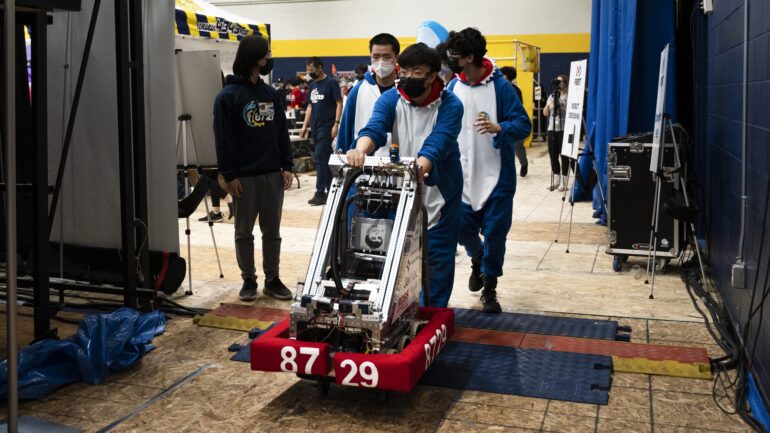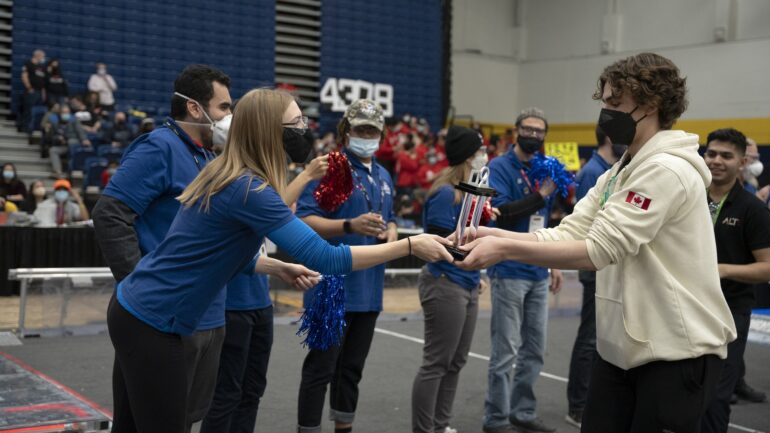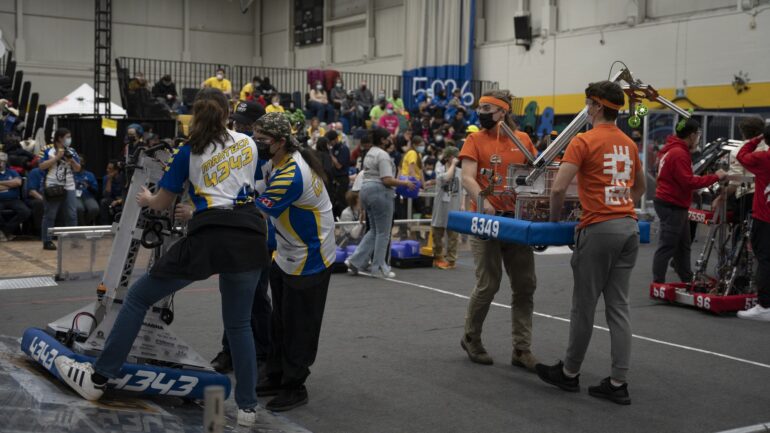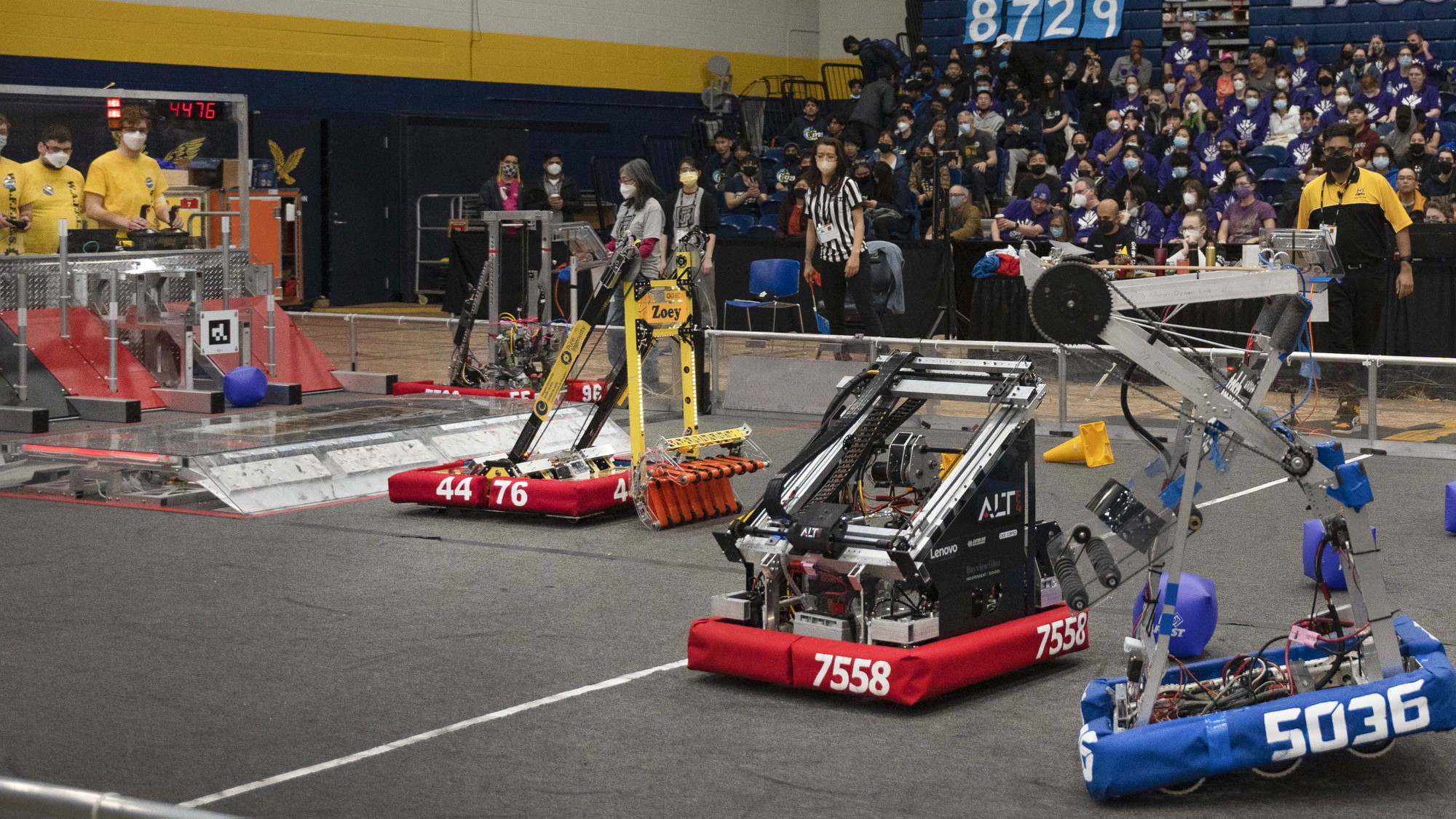The Humber College gym transformed into a robotic competition that brought hundreds of high school students representing 30 teams from across Southern Ontario.
They put their robots to the test in challenges created by the For Inspiration and Recognition of Science and Technology (FIRST) organization from March 17 to 19.
They competed, and in some cases collaborated, for 22 awards up for grabs. The global organization has been hosting competitions since 1992. The contest requires teams to build robots that would complete a set of tasks at the games for points.
Angeline Yen, a Grade 11 student from Ottawa and co-captain of the Sparkling H20 team, said the competition helped her get an insight into post-secondary education.
“It’s been really helpful all around, like networking and trying on the hands-on skills to see what it’s all about, and that’s helped a lot in getting excited (about) university,” she said.
The volunteer-led organization created the competition to advance students’ experience and opportunities in science, technology, engineering, and mathematics (STEM) education. Ontario is actively creating pathways for students looking to enter the STEM field. They labelled them as the “jobs of the future” on March 10 after implementing a mandatory technology credit as a requirement to graduate high school beginning for those entering Grade 9 in 2024.
Yen said she wants to become an engineer while most of her team wants to study computer science. The competition helped them solidify their post-secondary objectives.

“You come out here and you see all the teams. You also get to talk to the mentors and the volunteers who go to university or have had this experience in high school,” she said.
“It’s really exciting to see what’s in store for the future,” Yen said.
William Neal, a FIRST program manager, said the goal of the event goes beyond robot building.
“It’s not just a competition. We’re not using humans to build robots, that’s not the endgame. The robots are a catalyst for the development of human qualities,” he said.
Teams that participated needed to design, build, and wire their robots for the competition. The machines were expected to carry cubes and cones into slots on their respective sides to gain points.

But while everyone was competing for the first-place trophy, FIRST’s primary focus was on the cooperation between teams to make sure everyone had the chance to compete fairly.
“The teams will help each other to make sure that their robots are working. Sharing parts, expertise, and swarming around different problems that arise,” Neal said.
“I see a lot of that collaboration this year,” he said.
Michael Auchincloss, the Humber College Associate Dean for the School of Applied Technology, said what made this year special was that the competition was able to run with almost no restrictions.
“They get to see what college life is like,” he said. “They get to meet teams from in and around the province.
“It’s an opportunity that these students haven’t had for a number of years, and to give them that opportunity is absolutely wonderful,” Auchincloss said.
Humber first hosted the FIRST event in 2019.

The college also received a $30 million donation from the Barrett Family Foundation on Jan. 24 to be put towards the advancement of STEM education. The donation, considered one of the largest ever given to a college, was granted to Humber to give back to the community.
Auchincloss echoed the same devotion in making this event possible as the province continues to invest in STEM education.
“It takes a team to make this happen. For Humber, it’s all about giving back to the community, and giving [the students] the opportunity to demonstrate what they’ve learned over the years,” he said.
“To come here and compete against each other and work as a team to do it,” Auchincloss said.

